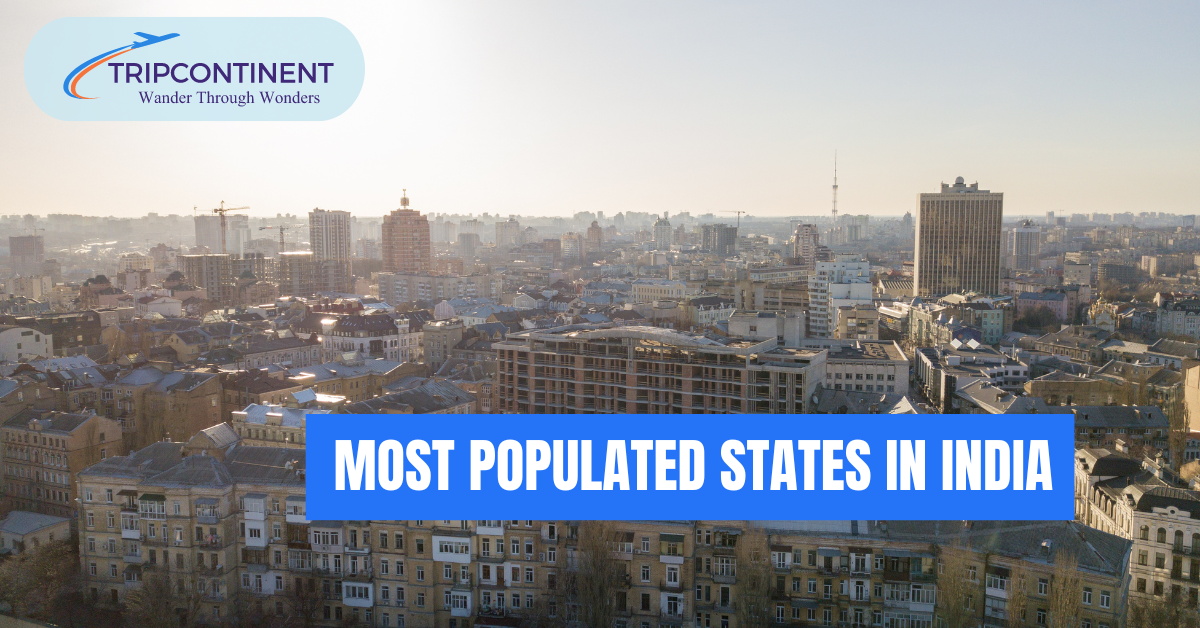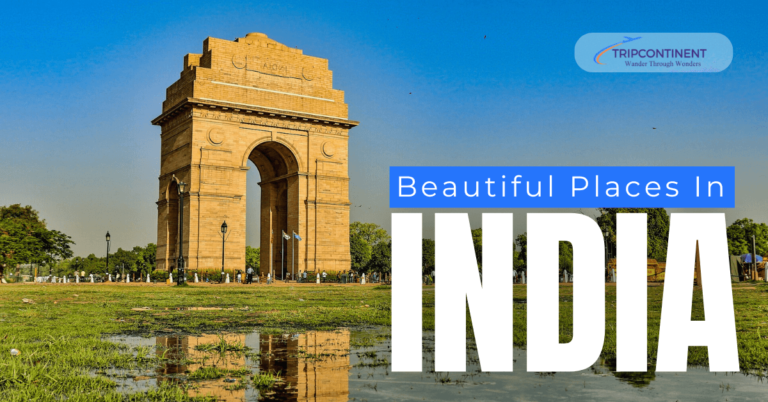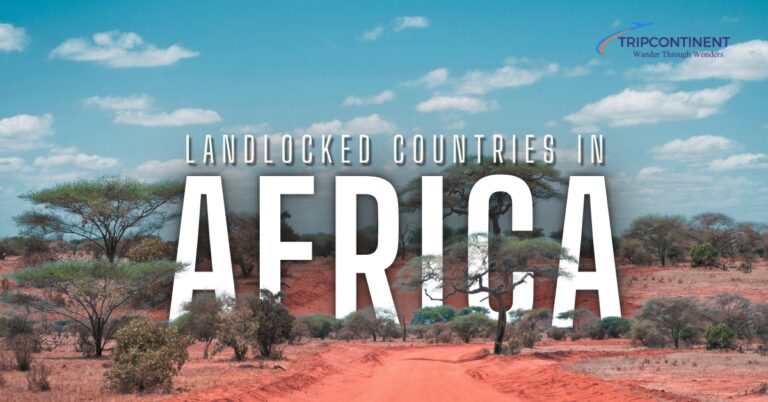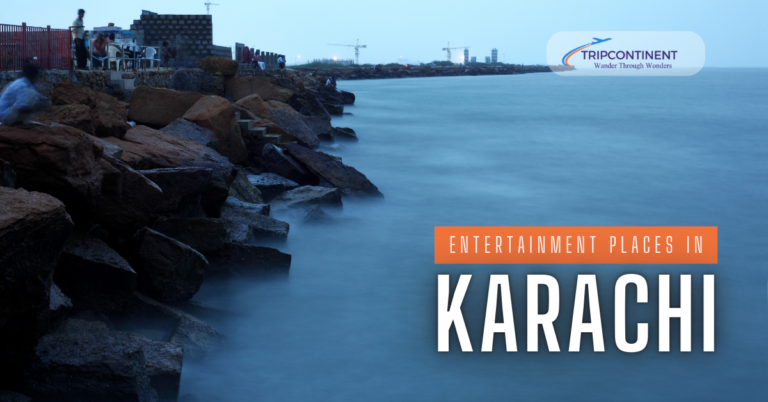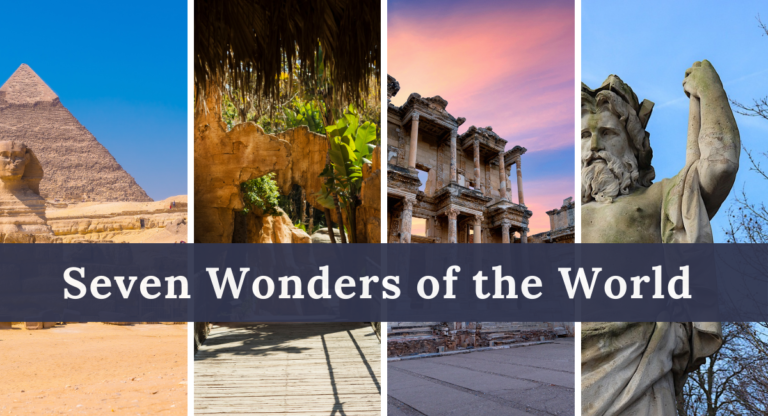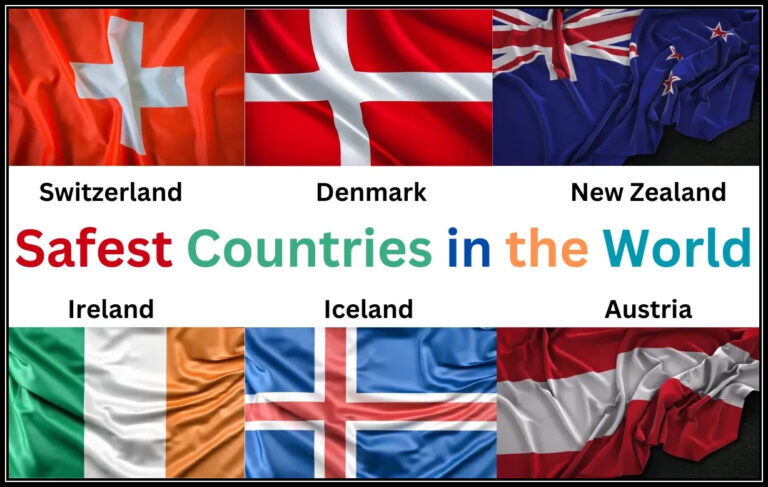A Closer Look At the Most Populated States in India in 2024
India, known for its diversity and sheer scale, is home to some of the most densely populated regions in the world. Based on Census 2011 data, states like Uttar Pradesh, Maharashtra, Bihar, and West Bengal rank among the top in population, each contributing significantly to India’s demographic landscape. These most populated states in India not only reflect the country’s cultural richness but also play a pivotal role in shaping its economic and social dynamics. From thriving cities to vast rural expanses, these states face unique challenges in governance, infrastructure, and development.
Understanding the distribution of India’s population across these regions offers a deeper look into the nation’s growth, opportunities, and pressing need for sustainable development strategies, which are crucial for these state’s future.
A List of the Most Populated States in India
Here is a list of the most populous Indian states as per the 2011 census.
- Uttar Pradesh
- Maharashtra
- Bihar
- West Bengal
- Madhya Pradesh
- Tamil Nadu
- Rajasthan
- Karnataka
- Gujarat
- Andhra Pradesh
1. Uttar Pradesh
With around 200 million residents, Uttar Pradesh is the most populous state in India, making up 16.51% of the nation’s total population. UP, which is well-known for its depth of history and culture, is home to well-known cities like Varanasi, Agra, and Lucknow. The state has a largely rural demographic, with 77.73% of its population residing in villages. Agriculture plays a crucial role in India’s economy, making it one of India’s key grain producers, particularly in wheat, sugarcane, and rice. Despite being agriculturally dominant, the state also boasts a growing industrial sector, particularly in cities like Noida and Kanpur. Politically, Uttar Pradesh holds a significant position, often shaping the national political landscape due to its large representation in the Indian Parliament.
However, the state faces challenges like overpopulation, poverty, and lack of infrastructure in rural areas, which require attention for sustainable development. With a population density of 828 people per square kilometer and a sex ratio of 912 females per 1,000 males, managing such a vast demographic is a major task for the state government as it continues to balance urban growth and rural development.
In addition to its economic and political importance, Uttar Pradesh is also a hub of education and culture. It is home to prestigious institutions such as Banaras Hindu University and Aligarh Muslim University. The state hosts major sporting venues like the Ekana Cricket Stadium in Lucknow, while historical landmarks like the Taj Mahal and Fatehpur Sikri continue to attract tourists globally. The State Museum in Lucknow and other cultural institutions offer insight into UP’s rich heritage, further enhancing its role as a key state in India’s cultural landscape.
Must Explore: Richest Cities in India
2. Maharashtra
Maharashtra, the second most populous state in India, has a population of over 112 million, accounting for 9.28% of the country’s total. The state is a unique mix of urban and rural, with 54.78% of its population residing in villages while the rest live in cities. Mumbai, India’s financial and entertainment center and a major contributor to the nation’s GDP, is Maharashtra’s economic hub. Cities like Pune and Nagpur also serve as major industrial and educational hubs, attracting talent and investment from across the nation.
Maharashtra is home to a diverse cultural landscape, with historical landmarks like the Ajanta and Ellora caves and vibrant festivals like Ganesh Chaturthi. With a sex ratio of 929 females per 1,000 males, the state faces a relatively better gender balance compared to some others. Its rural areas are known for agriculture, producing a variety of crops like cotton, sugarcane, and soybeans. However, Maharashtra also grapples with issues like urban congestion, farmer distress, and drought in certain regions, requiring comprehensive planning to address these challenges while maintaining its status as a key driver of India’s economic engine.
3. Bihar
Bihar, with a population exceeding 104 million, is India’s third most populous state and remains predominantly rural, with 88.71% of its people living in villages. The state has a rich cultural and historical heritage, being the birthplace of major religions like Buddhism and Jainism, with sites like Bodh Gaya and Nalanda drawing visitors from across the world. Bihar’s economy is based primarily on agriculture, with rice, wheat, and maize being the three main crops. Despite its rich resources and history, Bihar struggles with significant development challenges, including poverty, inadequate infrastructure, and low literacy rates. The state has a high population density of 1,102 people per square kilometer, which puts immense pressure on its resources and governance.
Efforts to improve healthcare, education, and employment opportunities have been ongoing, but progress has been slow. Bihar’s gender balancer is slightly skewed, with 918 females for every 1,000 males. While Bihar’s large population poses challenges, its youthful demographic presents opportunities for growth if managed effectively, with a continued focus on education, skill development, and infrastructure.
4. West Bengal
West Bengal, with over 91 million people, ranks as the fourth most populous state in India. It presents a balanced demographic, with 68.13% of its population living in rural areas and 31.87% in urban centers. The state capital of Kolkata is renowned for its extensive literary and cultural legacy and for being a center for theater, the arts, and education. Historically significant, West Bengal played a crucial role in India’s freedom struggle and remained an intellectual center. The state’s economy is a blend of agriculture and industry, with jute, tea, and rice being its key agricultural products, while industries in steel, textiles, and information technology drive its urban economy.
In comparison to many other states, West Bengal maintains a superior sex ratio of 953 girls per 1,000 males while having a comparatively high population density of 1,029 persons per square kilometer. Challenges include poverty, healthcare access, and political instability in certain regions. However, with its unique mix of cultural richness and economic potential, West Bengal remains a crucial player in India’s social and economic fabric.
5. Madhya Pradesh
Known as the “Heart of India,” Madhya Pradesh is home to over 72 million people, making it the 5th most populous state. The majority of the population, 72.37%, lives in rural areas, engaging primarily in agriculture. The state is a leading producer of crops like wheat, soybean, and pulses. Madhya Pradesh is also rich in natural resources, including minerals like coal, diamond, and limestone, making mining a key industry. In addition to its economic importance, Madhya Pradesh is renowned for its cultural heritage, with several UNESCO World Heritage Sites, such as Khajuraho and Sanchi. The state also boasts numerous national parks and wildlife sanctuaries, making it a hotspot for biodiversity and eco-tourism.
Despite its cultural and natural wealth, Madhya Pradesh faces challenges in terms of education, healthcare, and infrastructure, particularly in rural areas. With a population density of 236 people per square kilometer, the state is less congested compared to others, but this also reflects its vast, underdeveloped regions. The sex ratio of 931 females per 1,000 males highlights a need for better gender equality measures. Madhya Pradesh continues to strive toward balanced development while preserving its rich heritage and natural resources.
Also Read: Largest Banks in India
6. Tamil Nadu
Tamil Nadu, with a population exceeding 72 million, is India’s sixth most populous state. The state boasts a near-equal rural-urban split, with 51.6% of its population residing in villages and 48.4% in urban centers. It is known for its rich Dravidian culture, magnificent temple architecture, and classical arts, including Bharatanatyam and Carnatic music. In addition to its cultural wealth, Tamil Nadu is an industrial powerhouse, contributing significantly to India’s automotive, textile, and technology sectors. Cities like Chennai and Coimbatore are major hubs for education, technology, and industry. The state has a high literacy rate and a robust education system, making it a leading destination for higher learning in India. Tamil Nadu also has a high sex ratio, with 996 females for every 1,000 males, reflecting positive gender balance efforts.
Additionally, the state’s infrastructure development, especially in transportation and urban planning, has facilitated growth in sectors like IT, manufacturing, and tourism. Tamil Nadu’s population density of 555 people per square kilometer is higher than the national average, placing pressure on resources. Yet, the state has managed to maintain steady economic growth while preserving its rich cultural heritage.
7. Rajasthan
Rajasthan, with a population of over 68 million, is the seventh most populous state in India. Known for its vast desert landscapes, historic palaces, and vibrant cultural heritage, Rajasthan is a major tourist destination, attracting visitors from around the world to cities like Jaipur, Jodhpur, and Udaipur. The state’s rural population is significant, with 75.13% of people residing in villages, relying largely on agriculture for their livelihoods. Rajasthan’s desert regions, particularly the Thar Desert, define much of the state’s geography. At the same time, its cities are known for their architectural grandeur, such as the iconic Amber Fort and Mehrangarh Fort. Despite its arid conditions, Rajasthan is rich in mineral resources, including marble, sandstone, and precious stones, making mining a key industry.
Additionally, the state has a growing renewable energy sector, particularly solar energy. The sex ratio of 928 females per 1,000 males reflects ongoing challenges in gender equity, though efforts are being made to improve this. Rajasthan’s population density is relatively low at 201 people per square kilometer, but its vast size and cultural diversity make it a unique and vibrant part of India.
8. Karnataka
Karnataka, with a population exceeding 61 million, is India’s eighth most populous state. Known for its capital city, Bengaluru, the technology hub of India, Karnataka is a leader in the IT and biotechnology sectors, attracting global investment and talent. However, the state is not just about tech; it also has a rich cultural heritage with deep roots in art, music, and literature. Karnataka is home to iconic traditions, including Carnatic music, and has produced literary giants in various Indian languages.
The state’s economy is diverse, with a balance between agriculture, industry, and services. While Bengaluru symbolizes its urban success, a significant portion of the population—49.22%—still lives in rural areas, relying on agriculture for their livelihood. Karnataka’s agricultural sector produces coffee, sugarcane, and spices, contributing to both national and international markets. With a population density of 319 people per square kilometer and a sex ratio of 979 females per 1,000 males, Karnataka manages to maintain a balance between rural and urban growth. The state’s blend of tradition and innovation makes it a unique contributor to India’s economic and cultural fabric.
9. Gujarat
Gujarat, with a population of over 60 million, ranks as India’s 9th most populous state and is renowned for its entrepreneurial spirit and economic dynamism. Known as the land of business and commerce, Gujarat has a strong industrial base, particularly in textiles, chemicals, and petrochemicals. Cities like Ahmedabad, Surat, and Vadodara are major commercial and industrial centers, driving both state and national economies. Gujarat’s rural areas also play a significant role, with 57.4% of the population engaged in agriculture, producing crops like cotton, groundnuts, and wheat. The state has a rich cultural heritage, with festivals like Navratri and the kite festival, along with a unique cuisine known for its diverse and flavorful vegetarian dishes.
Gujarat also holds historical significance, being the birthplace of Mahatma Gandhi. The sex ratio of 919 females per 1,000 males points to a need for improvement in gender balance. With a population density of 308 people per square kilometer, Gujarat strikes a balance between rural and urban development. Its progressive industrial policies, infrastructure projects, and cultural vibrancy make Gujarat a key player in India’s economic landscape.
10. Andhra Pradesh
Andhra Pradesh, with a population of over 49 million, is the tenth most populous state in India. Known for its rich cultural traditions, including classical dance forms like Kuchipudi and a diverse culinary heritage, the state offers a blend of traditional and modern influences. Andhra Pradesh has a predominantly rural population, with agriculture being a significant part of its economy. The state is a major producer of rice, contributing significantly to India’s food supply. In addition to agriculture, Andhra Pradesh is seeing growth in industries like pharmaceuticals, textiles, and information technology, particularly in cities like Visakhapatnam and Vijayawada.
With its coastline along the Bay of Bengal, Andhra Pradesh has several seaports that contribute to trade and commerce. The state is also rich in natural resources, including bauxite and coal, which support its industrial growth. The sex ratio stands at 993 females per 1,000 males, one of the better ratios in India. Despite its economic strengths, Andhra Pradesh faces challenges in education and healthcare, especially in its rural areas. However, the state’s ongoing development projects and cultural richness make it a vital contributor to India’s overall growth.
Also Read: Most Populated Cities in Pakistan
Conclusion
In conclusion, the most populated states in India play a pivotal role in shaping the country’s socio-economic and cultural landscape. From Uttar Pradesh’s agricultural heartland to Maharashtra’s urban-industrial powerhouse, each state contributes uniquely to India’s diversity. Understanding the population distribution and the challenges these states face is crucial for informed governance and sustainable development.
As India continues to grow, addressing issues like urbanization, infrastructure, and resource management becomes increasingly important. These populous states will continue to drive the nation’s progress, offering both opportunities and challenges in their pursuit of balanced growth and improved quality of life.
FAQs
Which Is the Largest State in India by Area?
Rajasthan is the largest state in India by area. Covering approximately 342,239 square kilometers, it is known for its vast desert landscapes, historical palaces, and vibrant culture.
Which State Is Known as the Heaven of India?
Jammu and Kashmir is often referred to as the “Heaven on Earth” due to its breathtaking natural beauty. Located in the Himalayan ranges, the state is known for its picturesque landscapes, serene valleys, snow-capped mountains, and pristine lakes. Its diverse topography, rich cultural heritage, and stunning scenery have made it one of India’s most iconic and admired regions.
Which State Is the Most Peaceful in India?
Ladakh is considered one of the most peaceful states in India. Renowned for its stunning landscapes, monasteries, and tranquil environment, it offers a serene escape amid the majestic Himalayas. With its sparse population, calm surroundings, and spiritual vibe, Ladakh provides a sense of peace and solitude, making it a popular destination for those seeking tranquility.
Which Is the World’s Most Populated Country?
China is the most populated country in the world, with a population of over 1.4 billion. However, India is expected to surpass China soon, as it has a similarly large population and higher growth rate. Together, these two countries account for more than one-third of the global population.
Is Delhi a State or a City?
Delhi, officially known as the National Capital Territory of Delhi (NCT), is both a city and a Union Territory in India. It contains New Delhi, which is the capital of India. New Delhi is an urban district within the larger city of Delhi and serves as the seat of all three branches of the Indian government.

I’m Sophia Jones, an adventurer at heart from New York City, USA. I live for travel and exploration, always eager to discover new places, meet fascinating people, and try out diverse cuisines. Over the past few years, I’ve traveled to numerous countries, immersing myself in different cultures and creating unforgettable memories.
